Hachioji Castle Ruins: The Tragedy Of Kanto's Hojo Clan

During the Sengoku era, the Tokyo region was dominated by the Hojo clan. Famous for Odawara Castle, they also had a castle of unparalleled technology in Hachioji too. Today let's look at the ruins of Hachioji Castle, a must-see for Japanese history fans.
When speaking of Japan's Sengoku era, one of the first things that may come to mind are Japan's three great unifiers: Oda Nobunaga, Toyotomi Hideyoshi, and Tokugawa Ieyasu.
But at that time there were a great many daimyo clashing with one another. Of these lords, the Kanto region's leader, the Hojo family, held incredible influence and power, thanks to their famously impregnable Odawara Castle - but have you heard of their Hachioji Castle before?
The Sengoku Rulers of Kanto: Who Were the Hojo?
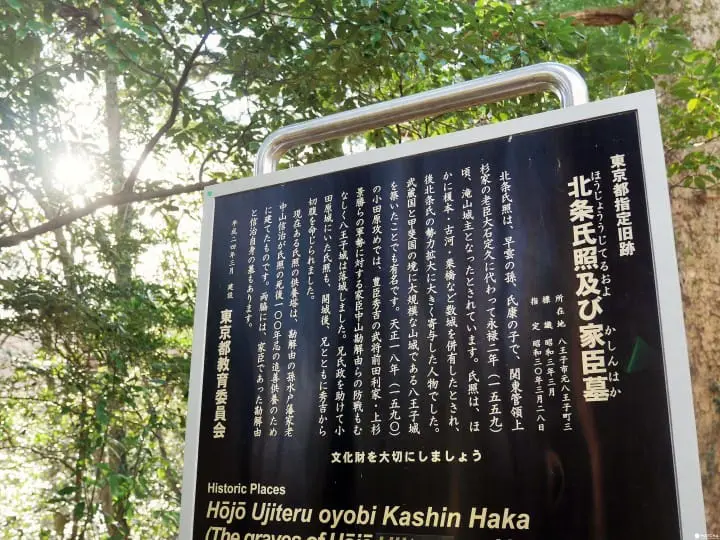
The Sengoku period (roughly 400 years ago) was a world wherein retainers supplanted their lords and rival chiefs and leaders fought one another across the length and breadth of Japan. The daimyo who controlled the fate of Japan possessed great intelligence and are considered to be heroes of their time to this day.
The former Hojo clan, specifically Hojo Ujimasa (and his sons), were one of these daimyo, and controlled the majority of the Kanto region, in what are now Tokyo, Kanagawa, Chiba, Saitama and Gunma prefectures; an incredibly large area granting this family enormous influence and power.
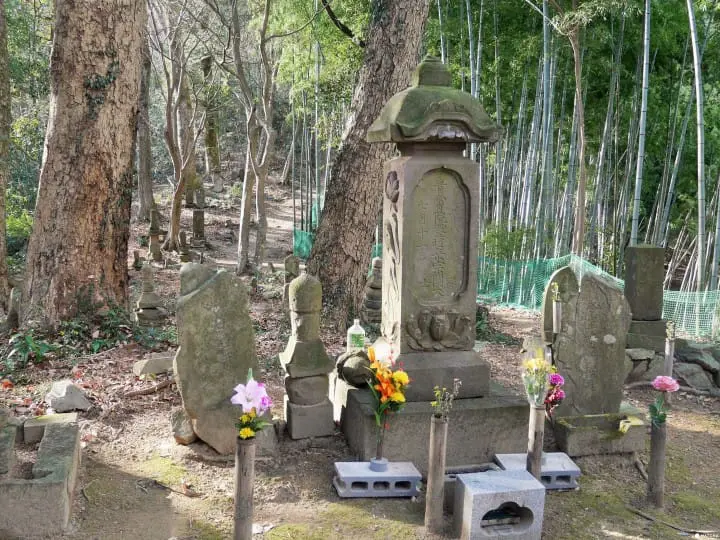
The Hojo clan not only had Odawara Castle, but also Edo Castle (now the Imperial Palace), Hachioji Castle, and many other castles to protect their domain. But in 1590, a massive assault on Hachioji Castle took place during the Siege of Odawara which brought about the ruin of the once glorious Hojo clan.
Here you can see the grave of Hojo Ujiteru, the last commander of Hachioji Castle. There is a side road along the route to Hachioji Castle where you can stop by and see this spot.
Although not nearly as well-known or famous as Odawara Castle, this is an excellent place to learn about the impressive castle construction technology that the Hojo family possessed. Built upon a steep mountain, this advantageous position enabled those within the castle to keep an eye on the movements of their enemies in the distance, now it is understood to have been one of the most important territories of the Hojo clan.
Traveling from the Station to Hachioji Castle
Take the Train to Takao
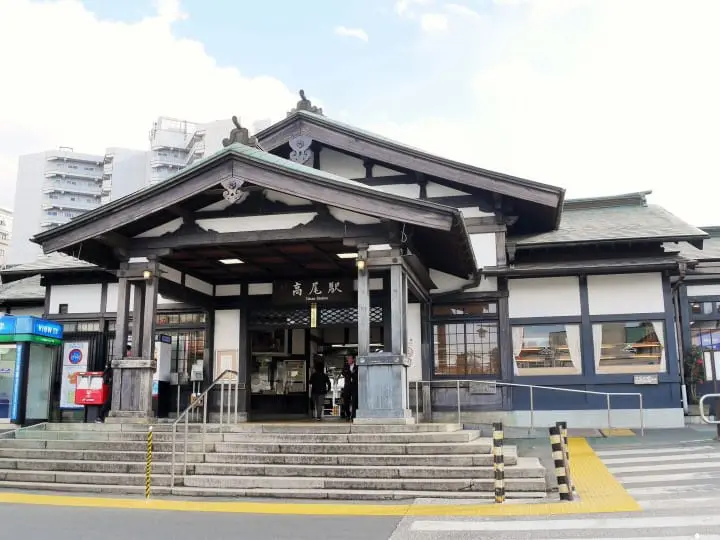
You will arrive at Takao Station in about fifty minutes if you depart from JR Shinjuku Station. Takao Station is the closest train station to Hachioji Castle.
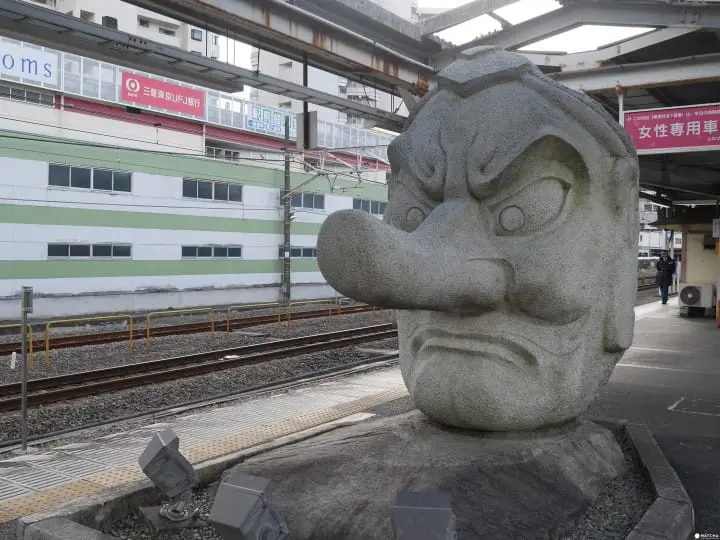
The station next to JR Takao Station on the Keio line is said to be home to the legendary tengu which appear frequently in Japanese myths. That is why you can find a giant stone statue of a tengu greeting travelers here at Takao Station.
Take a Bus and Travel to the Base of the Mountain
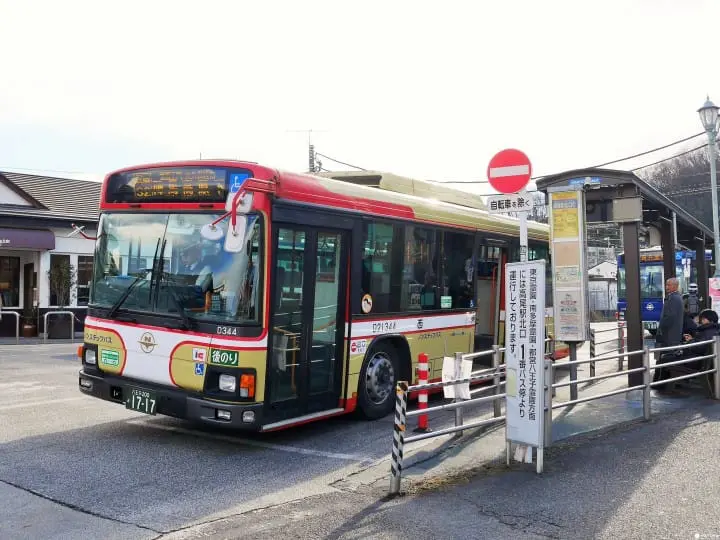
There is a bus stop to your right as soon as you exit the station. Get on the bus bound for Reienmae, and make your way towards the entrance to the Hachioji Castle ruins. It will take about ten minutes to reach the place. There are many buses on this route that do not travel to Hachioji Castle, so if you are unsure of which bus to take, it is a good idea to speak to the driver before boarding.
Arriving at the Entrance-way

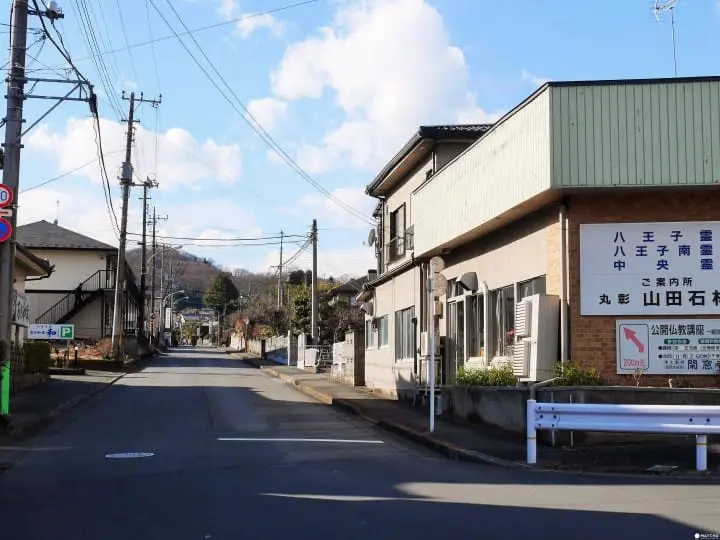
Get off at the Reienmae Hachioji-jo-ato Iriguchi stop, and you will find yourself at this intersection. There, if you turn to your left, you will find yourself facing a long road that gradually goes upwards; this is the road to the castle.
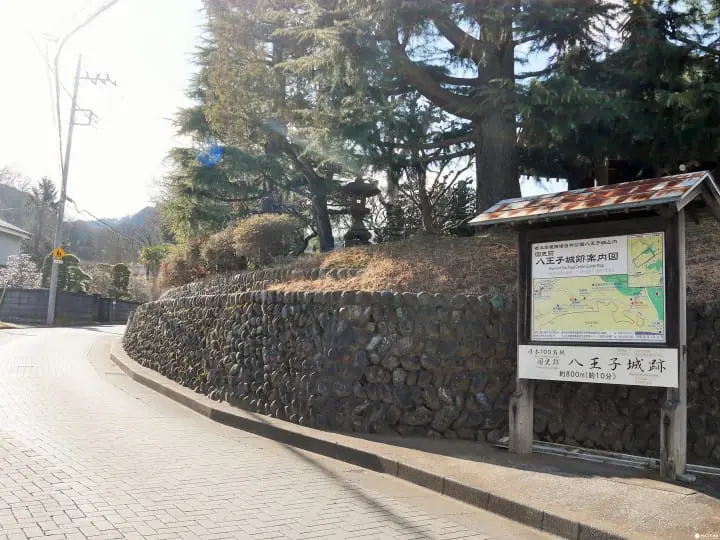
After walking for about ten minutes, you will come across a sign with 'Ruins of Hachioji Castle' written on it, but you will still need to continue on from there.
One of Japan's 100 Famous Castles: the Hachioji Castle Ruins
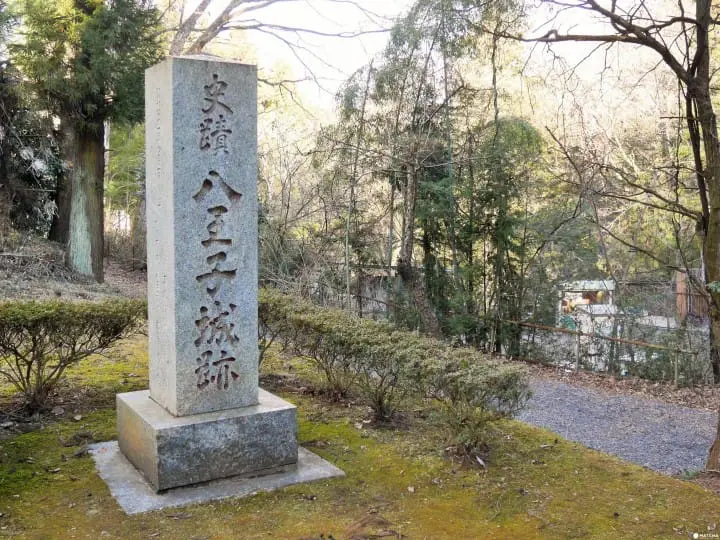
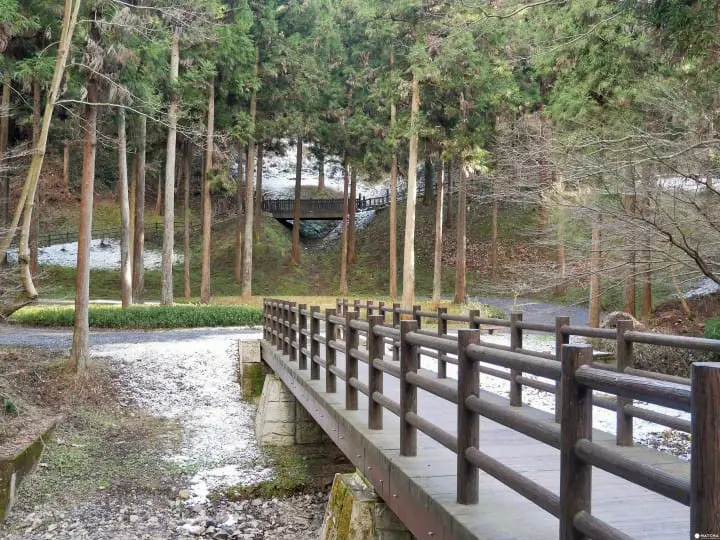
As Hachioji Castle was built at the top of a tall mountain, the mountain itself served as a fortress as well. Great skill was required in order to build this castle on such steep, sloping land, which has also helped to make this castle one of Japan's most famous.
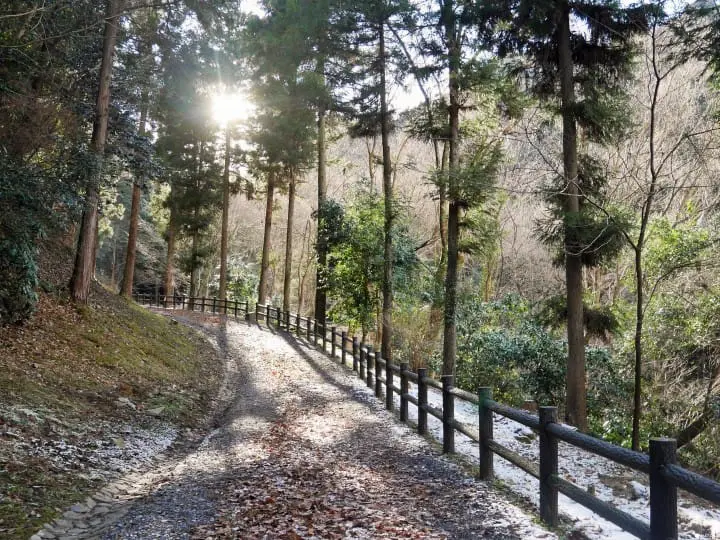
The castle ruins are divided in two parts: the goshuden (the castle lord's residence) at the foot of the mountain, and the honmaru (main defensive portion of the castle), at the summit.
The route towards the goshuden follows quite a gentle slope and is well-maintained; it takes about an hour and a half to travel from there to the honmaru on foot. No matter when you visit this pathway is quite beautiful; whether you are surrounded by greenery in the summer or piles of white snow in the winter, this is a walk you can thoroughly enjoy.

When we visited, it was February, the end of winter and the start of spring, according to the old Japanese calendar. The day before it had snowed a bit, leaving behind a thin layer of snow on the ground with fresh spring greenery just beginning to peep out from underneath.
Hikihashi: the Bridge to the Goshuden
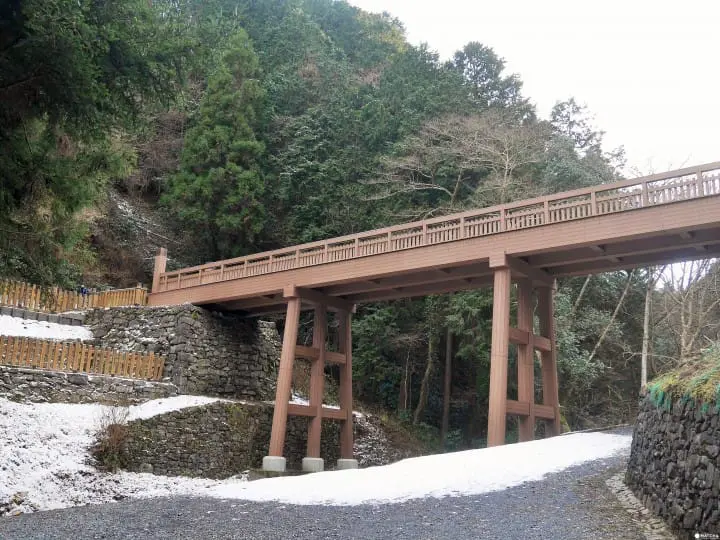
Just beyond the Hikihashi bridge is where the home of the daimyo once stood. In order to protect this residence against attack, the bridge at that time was purposely built in a manner that made it easy to destroy, which would buy the home's occupants some time as their enemies tried to find ways to advance. Now, the Hikihashi bridge has been recently reconstructed of far sturdier materials.
The Former Residence: Goshuden
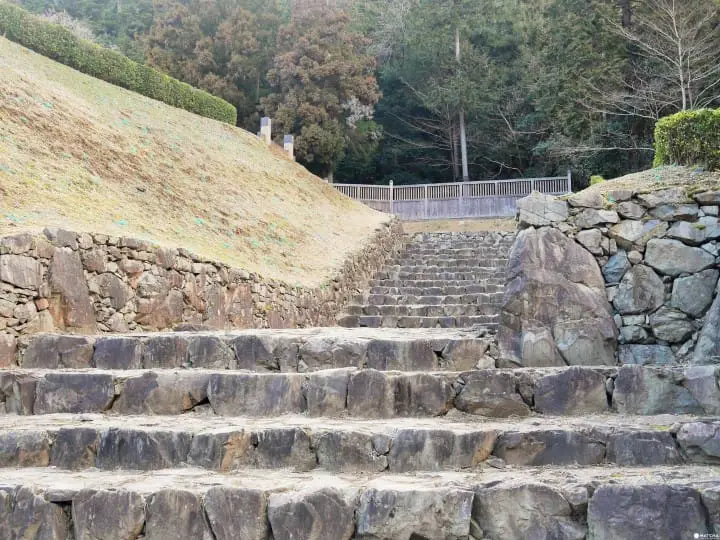
Before entering the goshuden, you will need to climb the stone staircase that you see in the photo above. The vast majority of stone stairs found in Japanese castles are built from a combination of stone and dirt, but those found at Hachioji Castle were built exclusively from stone.
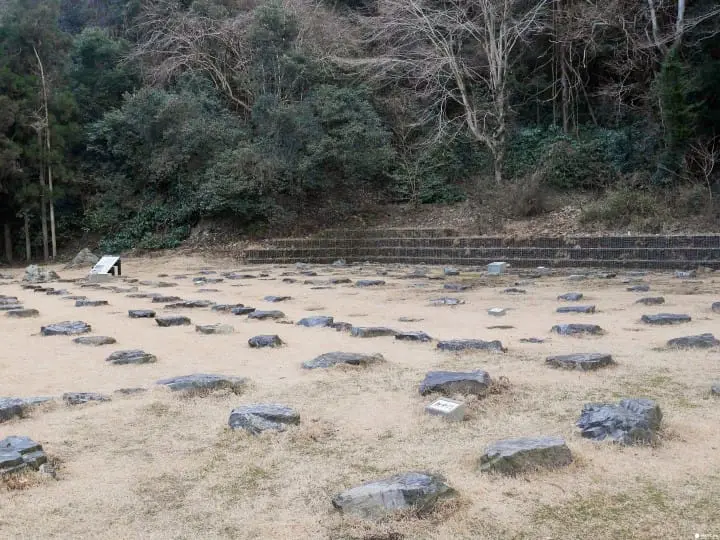
The goshuden was used as a residence during the time Hachioji Castle stood on this land.
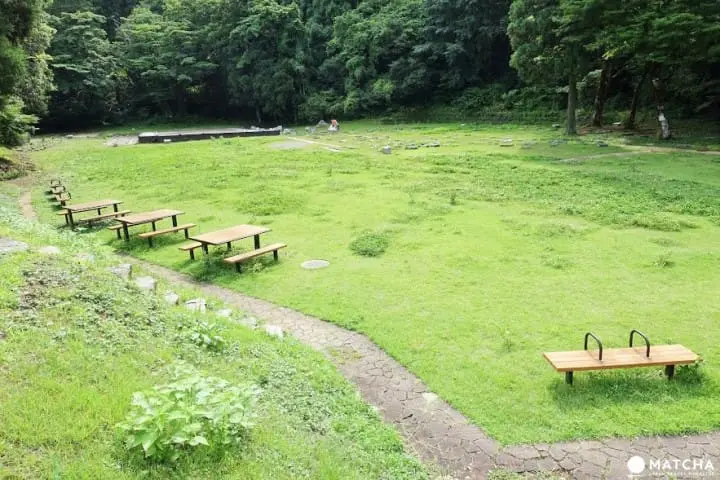
At the site today however, all that remains of the castle are the stones that made its foundation.
The Tragedy of the Era: the Goshuden Waterfall and Hojo Grave
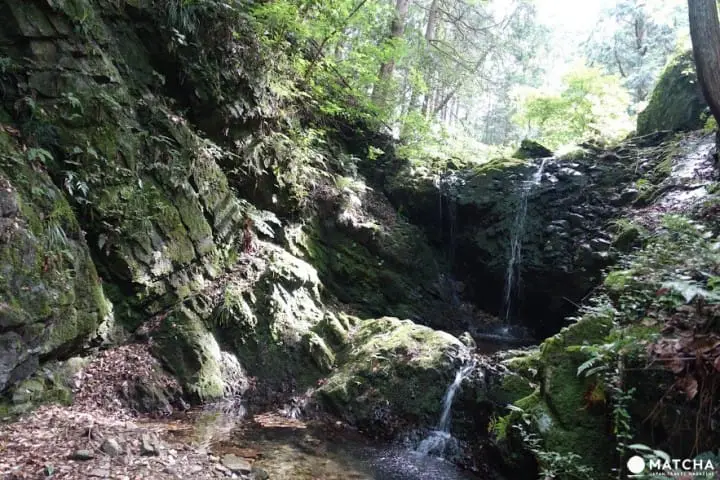
In 1590, the later ruler of Japan, Toyotomi Hideyoshi, systematically attacked Hachioji Castle and other castles held by the Hojo family, causing them to fall. The women and children who had been living within the goshuden are said to have thrown themselves into this waterfall, ending their own lives. According to legend, the waters ran red for three days after the seige.
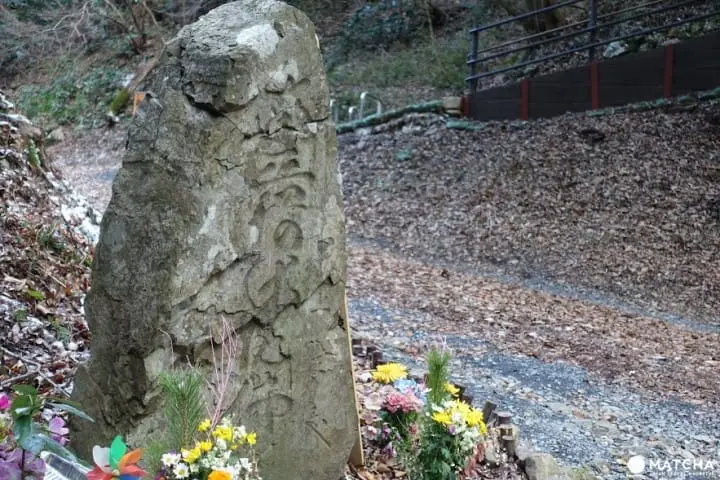
Ever since this tragedy took place, the Hachioji Castle ruins have been considered to be one of the most haunted places in the Kanto area. In order to pray for the peace of the wounded souls of those who died in this area, a great number of visitors bring flowers as offerings to this spot.
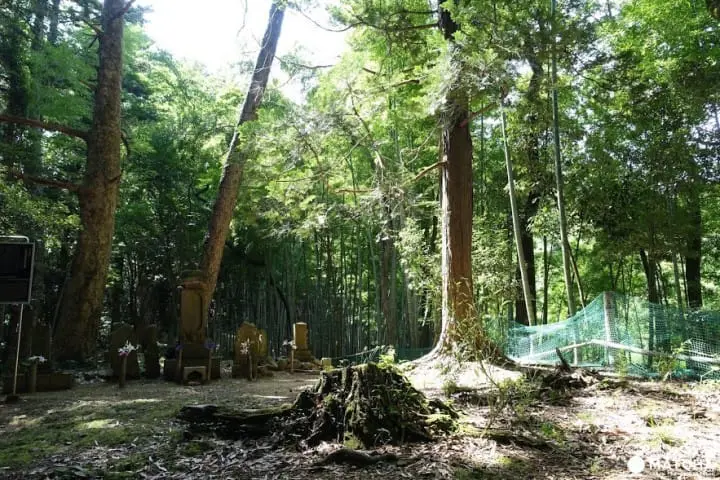
Nearly one hundred years after the Hojo family and their retainers committed ritual suicide in this space, the descendants of these individuals created this memorial ground at the entrance to the base of the mountain.
Now to Honmaru: the Capture of Hachioji Castle
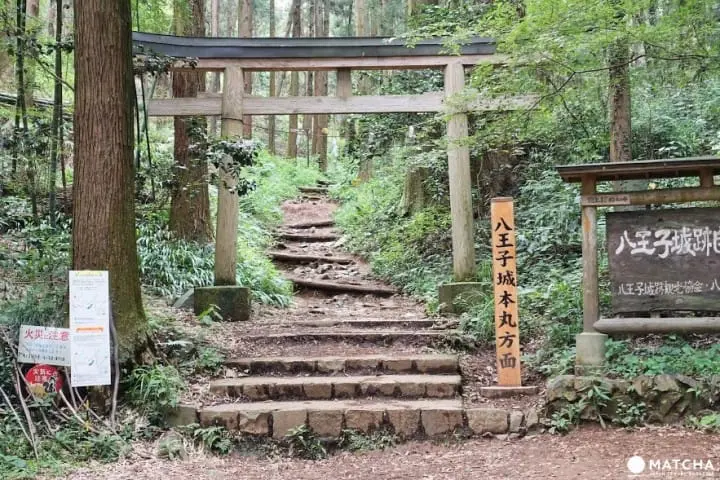
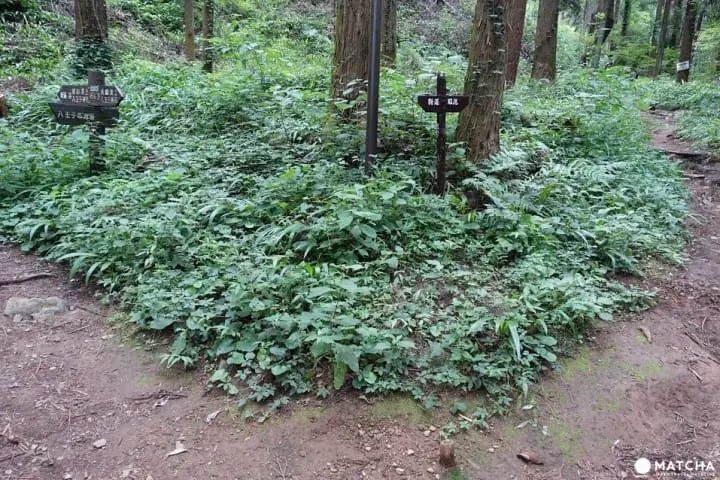
For Japanese castles, the most important part of their design is the honmaru, or inner citadel. It almost seems as if time has stopped here since the castle was attacked; here and there you can find broken large stones, as though the castle had been only recently destroyed. All that remains are parts of the castle walls scattered along the mountainside it seems.
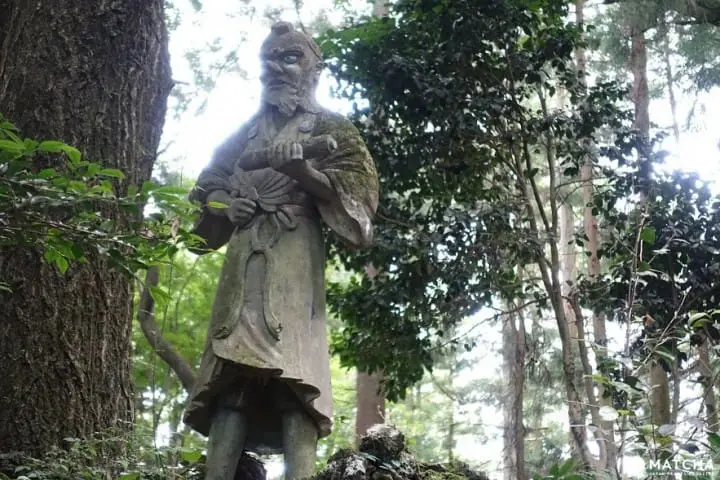

At present, this area has become a popular mountain trekking and climbing spot for locals, and as its natural environment is protected, is a wonderful place in which to experience Japan's seasonal scenery spreading out all around you.
When we visited, we were just in time to see the plum blossoms in full bloom. If you take the route all the way to the top of the mountain, you will be able to see Hachioji city spreading out all around you, and on clear days, be able to see Tokyo SkyTree and even Mount Fuji in the distance.
The mountain climbing route is rather steep, so if you are interested in enjoying this view, we strongly recommend being prepared with sturdy trekking boots and proper hiking gear - if you have these with you, it is a relatively safe course to climb!
Hachioji's Origin: Hachioji Shrine
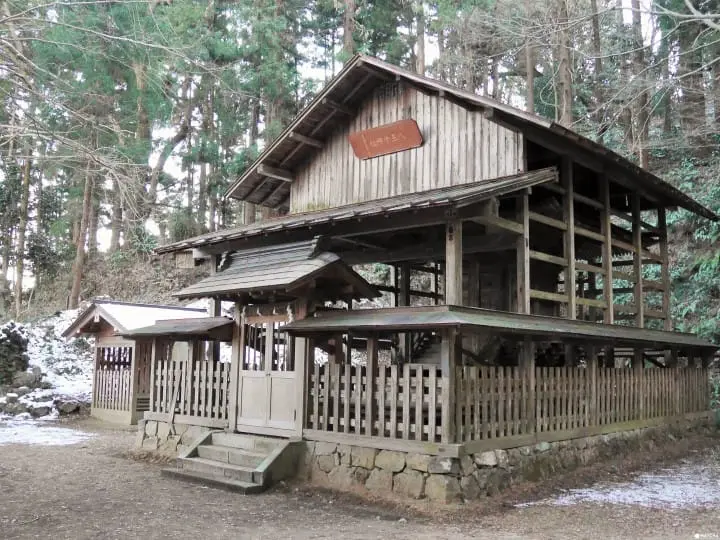
The name 'Hachioji' itself is said to have come from the syncretism of Shinto and Buddhism, where the god, Gozu Tenno, (an ox-headed god of mixed origin from India, Tibet and other countries), is combined with the eight bodies of the Mikogami. Mikogami are said to take on the form of children, and when doing so are often referred to as 'oji' (princes).
The people who lived below the honmaru considered the gods from this shrine to be protective guardians of Hachioji Castle, while at the same time loving and respecting the Buddhist spirits of the area, and it is from this combination that the name Hachioji (the Eight Princes) is believed to have arisen.
The Heart of the Hachioji Castle Ruins: Honmaru
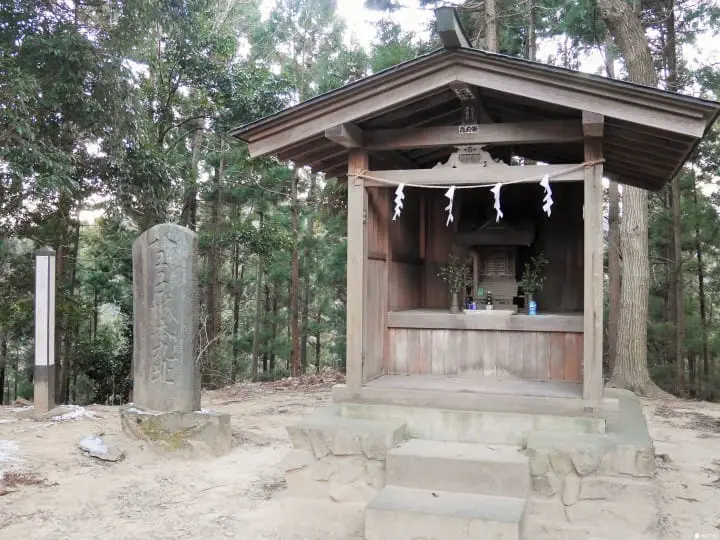
If you have made it all the way up to the summit of the mountain, you just might feel as though you have conquered Hachioji Castle yourself! At the time of its capture, the honmaru of Hachioji Castle quickly disappeared, and now all that remains is a small ancestral hall and a commemorative stone monument to mark its place.
In Conclusion
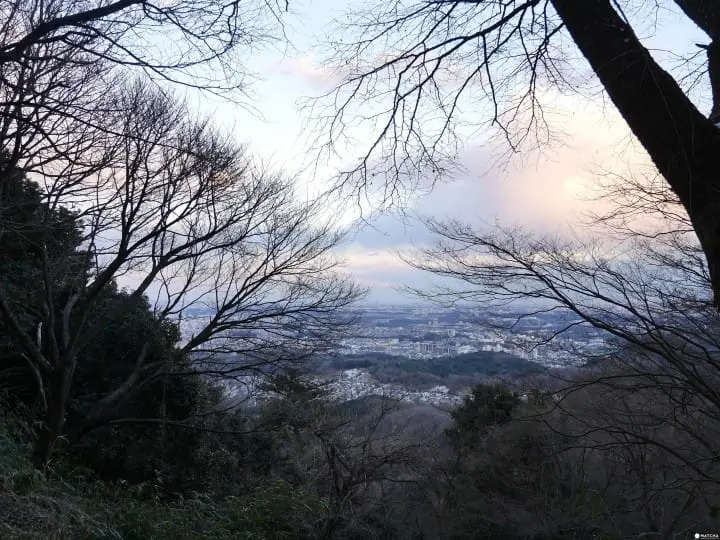
From the trailhead to the honmaru, it takes about forty minutes, if you walk at a leisurely pace. Although not as famous and lacking a magnificent castle tower when compared to other castles in Japan, one visit to this ingeniously used precipitous landscape will leave you with a great sense of admiration for the technical skill of the castle builders of the time.
And as it has been almost completely returned to nature, this is an ideal place to hike if you are not interesting in trekking a people-filled course like that at Mount Takao. With a history-rich atmosphere to match its natural landscape, a visit to the Hachioji Castle ruins is a must when sightseeing in Tokyo!
This article was translated into English from Taiwanese.












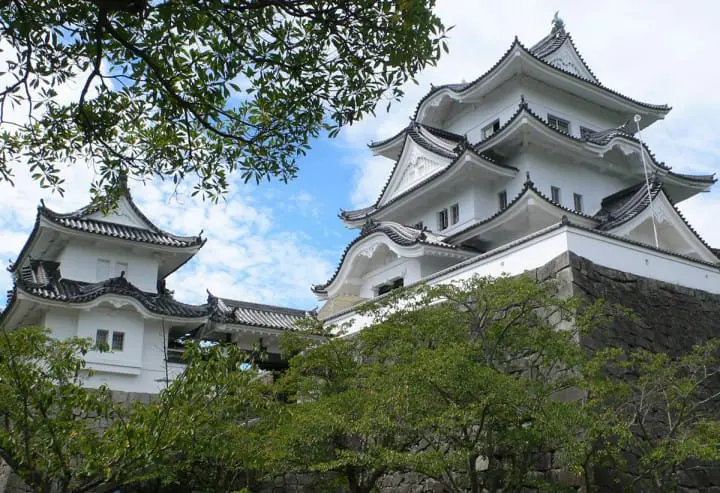

























![[Coupon Available] Attention Overseas Winter Sports Fans! Nagano's Sports Depot Has Evolved](https://resources.matcha-jp.com/resize/720x2000/2026/01/05-254819.webp)
![[2 hours from Tokyo ] 10 Quiet and Breathtaking Views of Mount Fuji in Yamanashi Hokuto City , Yamanashi - Part 2](https://resources.matcha-jp.com/resize/720x2000/2025/12/16-253037.webp)

![[Reopening in March 2026] Ikoma Sanjo Amusement Park Park, 45 minutes from Osaka , with free admission](https://resources.matcha-jp.com/resize/720x2000/2024/08/28-194409.webp)